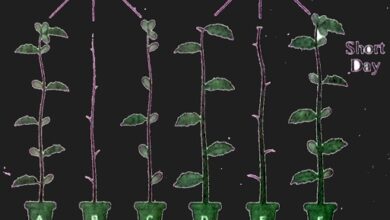Personal Identity
Personal identity is a Each type of memory has its own operation, although all of them cooperate to carry out a complete memorization process. This is complex and changing process that occurs from the beginning of life and continues to develop throughout life. Understood in philosophical disciplines as “soul”, it has been redefined as a personal identity from psychology. Its study is broad and has led to multiple and varied definitions of personal identity as a concept.
It according to psychology involves the process by which a person creates , over the years, an image of himself that answers the transcendental question of who am I? . That would be the definition of personal identity. It is understood as a process because it originates from the beginning of life and develops throughout it.
A decisive moment in the consolidation of personal identity is adolescence, when people rework everything they experienced in childhood and integrate it into a personal and particular image of themselves. In this article we explain in depth self-esteem in adolescence . However, the construction of personal identity does not stop at that moment, as it is a living and changing process that is fed by the different experiences that the person has throughout their adult life.
Our personal identity manifests itself through different elements, such as:
- gender identity
- policy choice
- Moral values
- Religion
- Popular customs and traditions
- aesthetic style
- Verbal and behavioral expression
- Leisure
- Profession
- Studies
Characteristics of personal identity
The creation of personal identity is always defined based on two general aspects:
- The person’s relationship with himself.
- The relationship of the person with his environment.
People develop their personal identity and knowledge of their environment from the experience with their own body, from the contact and self-regulation of their emotions, motivations and desires and from the mental elaboration of all these internal experiences .
On the other hand, the relationship with their family, school, their immediate natural and socio-cultural environment and, thanks to new technologies, with other social contexts, provides them with another series of experiences that will serve, in the same way, to provide new data in the creation and development of the concept of personal identity.
In this way, human beings carry out a Each type of memory has its own operation, although all of them cooperate to carry out a complete memorization process. This is complex work of elaborating each and every one of their life experiences in order to, based on them, build a self-concept or image of themselves . This personal identity, which, as we say, continues to fluctuate throughout life in small or large nuances, will serve as a basis for the person to carry out his life experiences, with respect for himself and with respect for his environment.
The construction of personal identity is, therefore, a multifactorial process that is constantly fed back, where life experiences create this personal identity that, in turn, conditions later experiences and is, again, fed by them.
For example, some of the factor elements by which personal identity is constructed are:
- Belonging group (family, friends, neighborhood, etc.): defines our beliefs and values.
- Educational system : offers certain contents that will shape our identity.
- Culture and social system : through them we internalize certain customs and norms.
- Geographical area and residence : the nature, climate and other physical and meteorological factors of our place of residence also largely condition our identity.
- Language : through language, many values, beliefs and customs of the language group to which it belongs are transmitted.
How to build personal identity
The process of building a personal identity is reflected in a very clear way by observing the evolutionary development of a person.
The baby, since its gestation, is not aware of the existence of itself, but relates to its immediate environment (its mother) and later with its body and its internal sensations to create beliefs and mental schemes that integrate everything that has been experienced . . Gradually, the baby begins to become aware of its existence and, with that, of the existence of the other and, from then on, it incorporates knowledge around it in relation to its environment.
During childhood, he continues to have relationships with others (family, school, socio-cultural context, etc.) that will lead him to continue building beliefs around who he is, who others are and how the world around him works. Adolescence is the high point in the construction of personal identity, where the person consciously re-elaborates his life experience and ends the process by creating and integrating a defining image of himself .
The rest of life experiences during adult life will serve to consolidate or call into question this personal construction of personal identity.
What is an identity crisis and how to overcome it
In the process of personal construction, as we have already said, multiple factors intervene: the person creates an image of himself based on his own internal experiences and also based on his relationship with his environment. It happens, therefore, that the definition of oneself is conditioned by the experience we have with others and, on many occasions, the image that our family, school or our colleagues have about us greatly conditions what we finally internalize as what we are. we really are.
In cases where the perception we assume about ourselves from the outside is similar to what arises from our own internal sensations, personal identity tends to constitute a safe and healthy base on which to build our personal life project. However, when the image that comes to us from the outside does not fit our internal perception , it usually happens that an internal struggle is created between what the person “believes he is” (usually based on negative beliefs about himself based on the received from abroad) and what he actually “feels like”. In these cases, critical life experiences (changes in life cycles, emotional breakdowns, mourning, dismissal, etc.) lead these people to suffer unpleasant identity crises.
Overcoming an identity crisis involves reviewing the beliefs, attitudes and values that support our personal identity, erasing those that do not correspond to our essential being and re-elaborating our personal image from more realistic, positive ideas and in line with the being that we are. we really are. In this article, you’ll find more information on overcoming an existential crisis .



